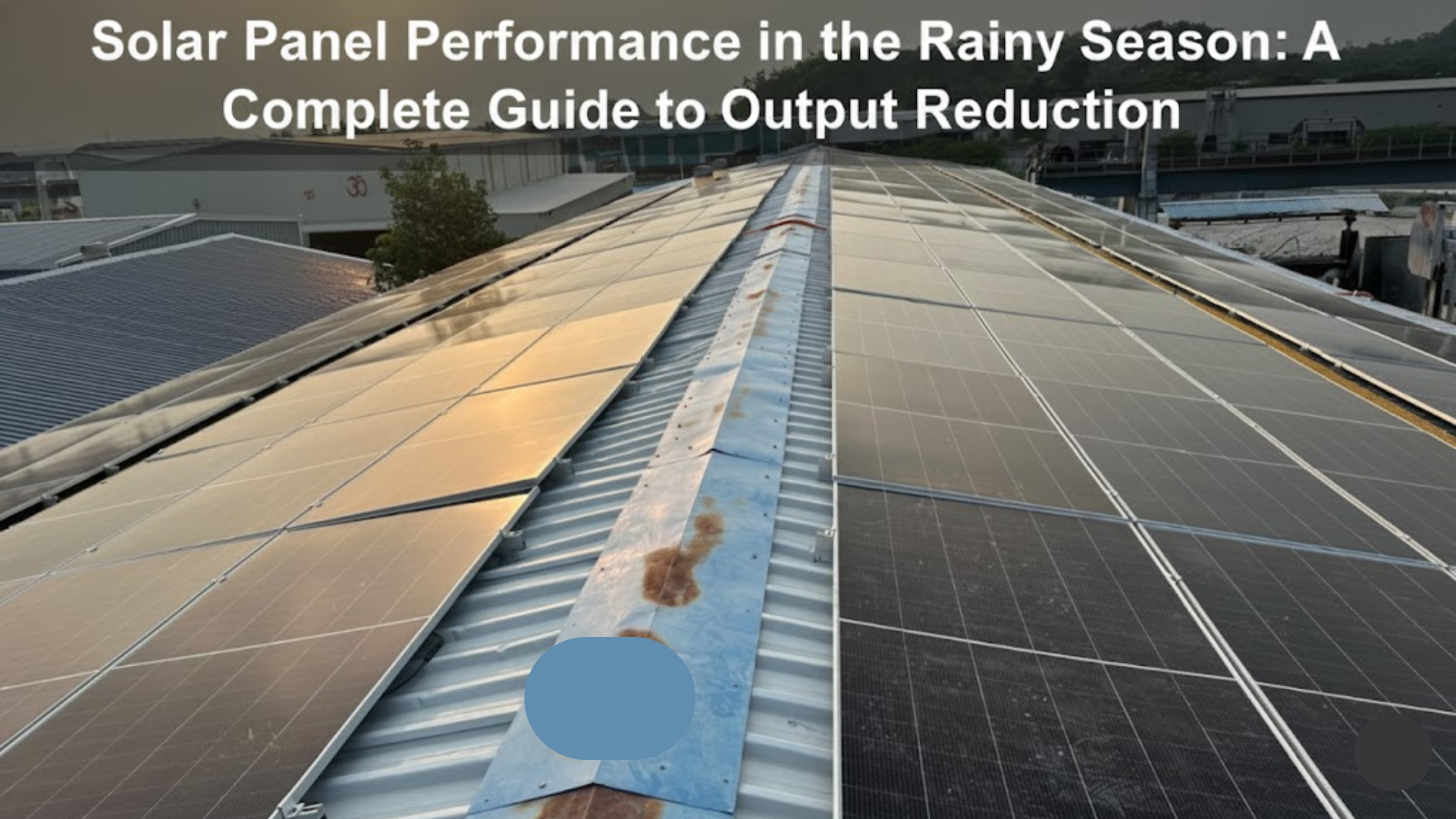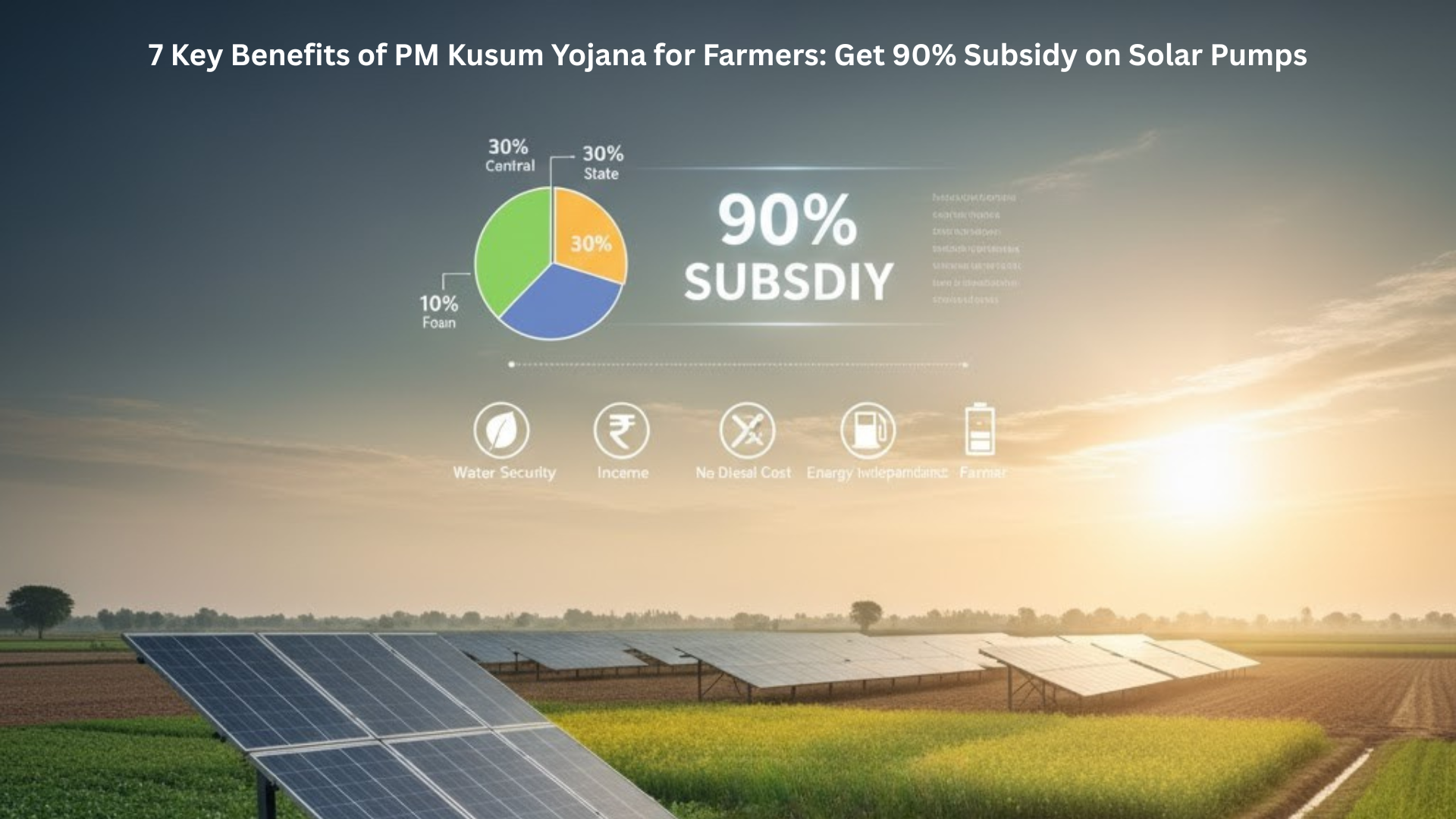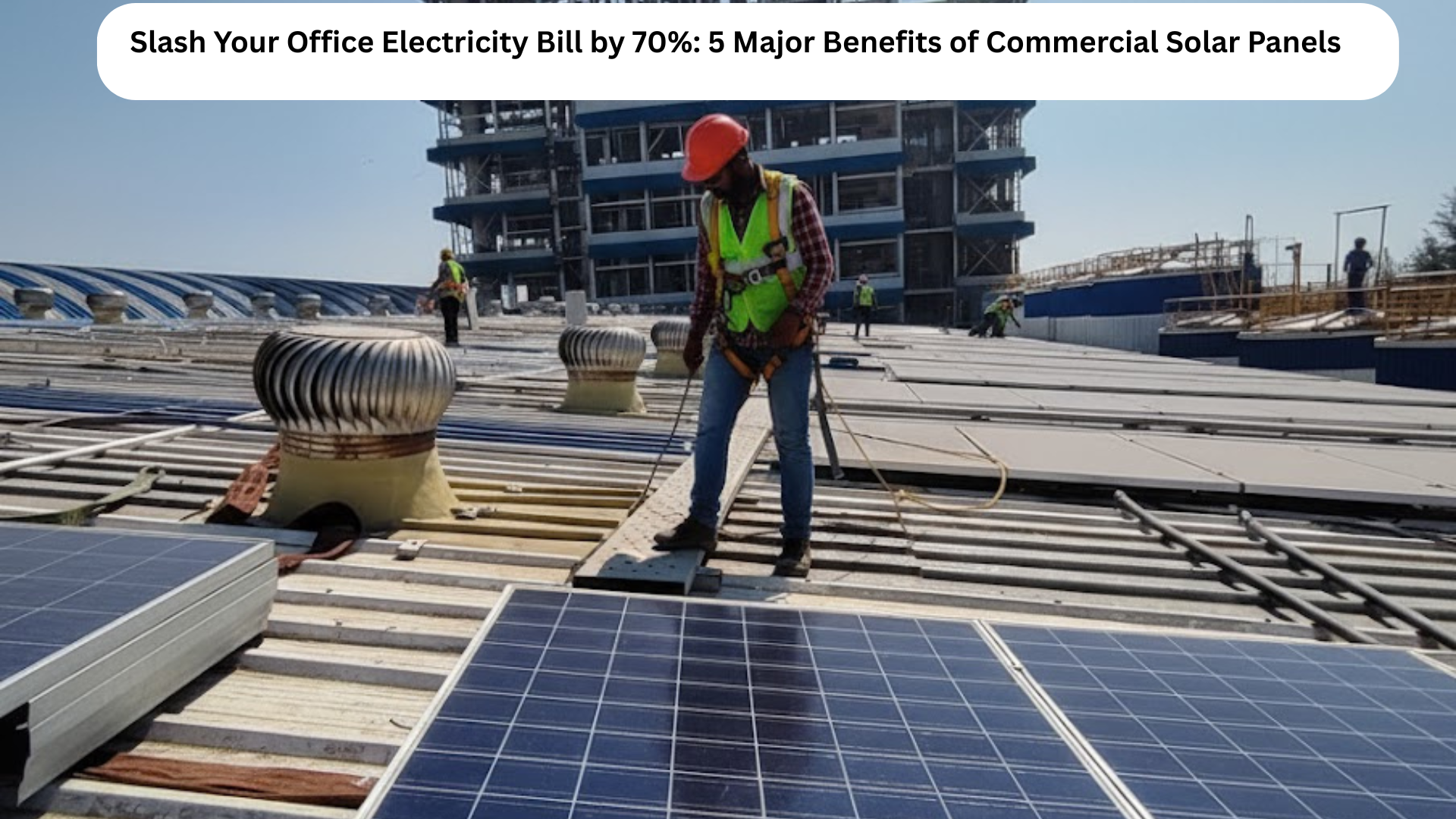It’s the most common and critical question we receive from homeowners considering a transition to clean energy: “Do solar panels work in rain?” The fear is understandable—if your roof is covered by heavy clouds for a week, will your system shut down completely?
The short, reassuring answer is Yes, absolutely! Your system continues to generate power.
However, to give you a complete and honest assessment, we must talk about output reduction. Unlike clear, sunny days, rainy weather significantly affects the intensity of the light reaching your panels, which directly impacts the amount of electricity they generate. Understanding this reduction is key to setting realistic expectations and confirming that solar is still a fantastic investment, even in areas with heavy monsoon seasons.
This comprehensive guide will demystify the performance of solar panels during the wet season, detail the science behind the drop in efficiency, and give you the knowledge needed to manage your system with total confidence, regardless of the weather outside.
Part 1: Do Solar Panels Work in Rain? Understanding the Science Behind It

The common misconception is that solar panels need direct sunlight. The truth is, they only need light (photons) to activate the photovoltaic (PV) effect.
Do solar panels work in rain? The Critical Role of Diffuse Light
When the sky is heavily overcast, the clouds intercept the direct path of sunlight and scatter it. Your panels, particularly modern cells, are highly efficient at absorbing this diffuse light to continue producing power.
- Light Intensity vs. Panel Efficiency: The solar cell’s efficiency rating (e.g., 21% conversion rate) remains unchanged regardless of the weather. What varies is the intensity of the light available. On a clear day, light intensity can be around 1000 W/m2. During heavy rain, this may drop to 100−200 W/m2. The panel works, but with less input power.
- Modern Cell Technology: Leading technologies like Monocrystalline cells and advanced designs like PERC (Passivated Emitter and Rear Cell) or N-Type cells are engineered to be highly effective at capturing this scattered, low-intensity light. This is why choosing high-quality panels is crucial in monsoon-prone regions.
The Unexpected Benefits of Rain and Cooling
Rainfall brings two significant long-term advantages that often offset some of the temporary production loss:
- Natural Cleaning: Rain acts as a natural cleaning agent. It washes away accumulated dust, grime, and pollen that form a film over the panel surface. These layers of dirt are often the biggest culprit for long-term energy loss—sometimes reducing daily output by 5%−10%. The rain essentially provides free, high-volume maintenance.
Optimal Temperature:Solar panels work most efficiently at cooler temperatures, specifically around 25∘C. High summer heat can cause efficiency to drop (by about 0.3%−0.5% per degree above optimal). The cooler, rainy climate naturally lowers the panel temperature, slightly improving their conversion performance when light is available.
Part 2: Do solar panels work in rain? Real-World Impact and Output Reduction
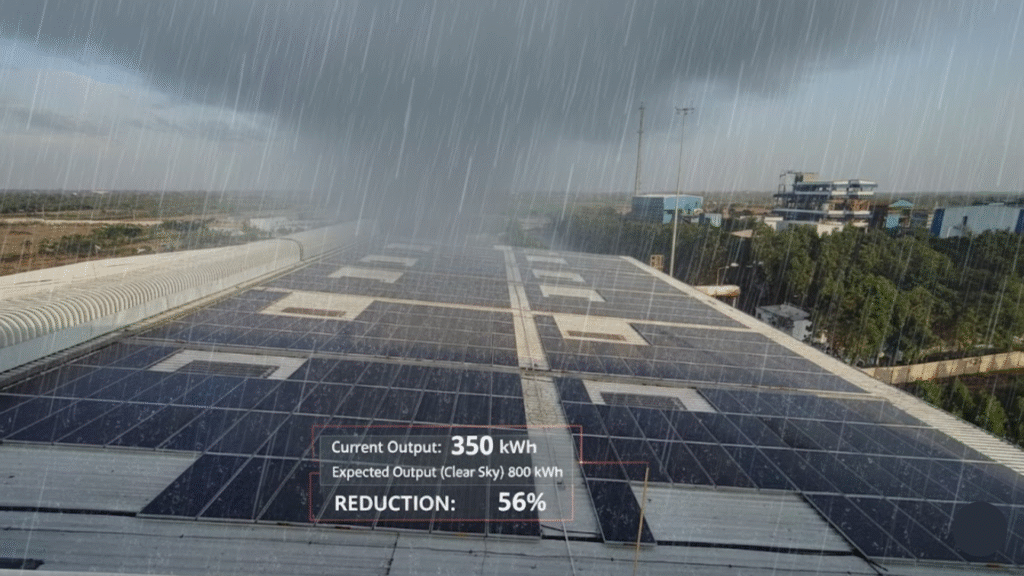
It is vital for solar owners to have realistic expectations for the wet season. A reliable installation is always based on your region’s Annual Energy Yield—a calculation that already factors in the lower production days.
Do Solar Panels Work in Rain? Estimated Power Output in Variable Weather
Here is a general estimate of what you can expect in terms of power output compared to a clear, sunny day, based on industry averages:
| Weather Condition | Typical Irradiance (W/m²) | Estimated Power Output (Compared to Peak) |
| Clear, Sunny Sky (Peak) | 900−1000+ | 100% |
| Light Overcast/Haze | 500−700 | 60%−80% |
| Heavy Cloud Cover (Pre-Rain) | 200−500 | 20%−40% |
| Heavy Rain/Monsoon | 100−200 | 5%−20% |
The Takeaway: Your system never stops working completely; it simply shifts to a lower operational capacity. The key is that the months of high output easily compensate for the dips during the monsoon.
The Inverter’s Role in Maximizing Low Light
The inverter is the “brain” of your solar system. During fluctuating weather, its role becomes critical:
- Maximum Power Point Tracking (MPPT): All modern inverters use MPPT technology. The MPPT continuously scans the entire array’s voltage and current to find the single optimal operating point that draws the most power from the limited available light. This technology is crucial for minimizing the impact of passing clouds.
Rapid Response: As a cloud moves over your panels, light drops almost instantly. A high-quality inverter reacts within seconds to adjust the operating point, ensuring the system extracts every possible watt before the cloud passes.
Part 3: Financial Security – The Annual Compensation Strategy
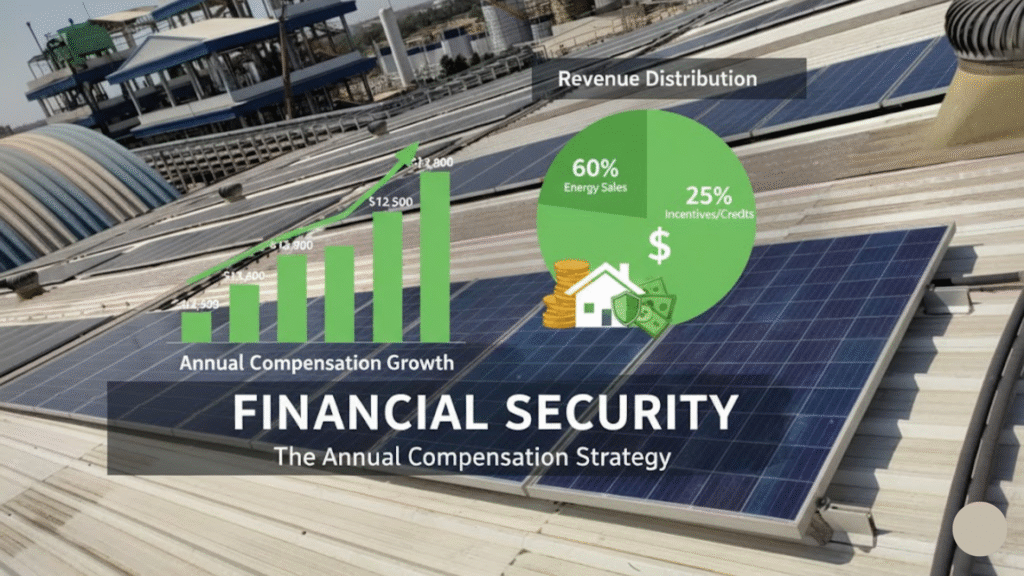
The profitability of your solar system is based on its long-term performance, not its daily output during a storm.
Net Metering and the Energy Bank
For grid-tied homeowners, Net Metering provides an essential financial buffer against the monsoon:
- Bank Your Energy: During the 8-9 months of bright sunshine, your system frequently generates excess power—more than your home consumes. This surplus is exported back to the utility grid.
- Receive Credits: The utility company records this exported energy and grants you energy credits on your account. You are essentially building a “bank of energy.”
- Draw Down in Monsoon: When the monsoon hits and production dips, you temporarily draw deficit power from the grid. Instead of paying cash for those units, they are automatically offset by the credits you banked earlier.
This compensation model ensures your annual savings target is met by balancing the high-production period against the low-production period.
The Importance of System Sizing
A less experienced installer might size your system purely based on average consumption. A trustworthy solar professional will size your system based on your Total Annual Consumption (kWh) and the local Peak Sun Hours (PSH), which are adjusted downward for monsoon-prone areas. This guarantees the system is inherently large enough to cover the low-efficiency periods and still meet your annual energy needs.
Part 4: Protecting Your Investment – Monsoon Preparation
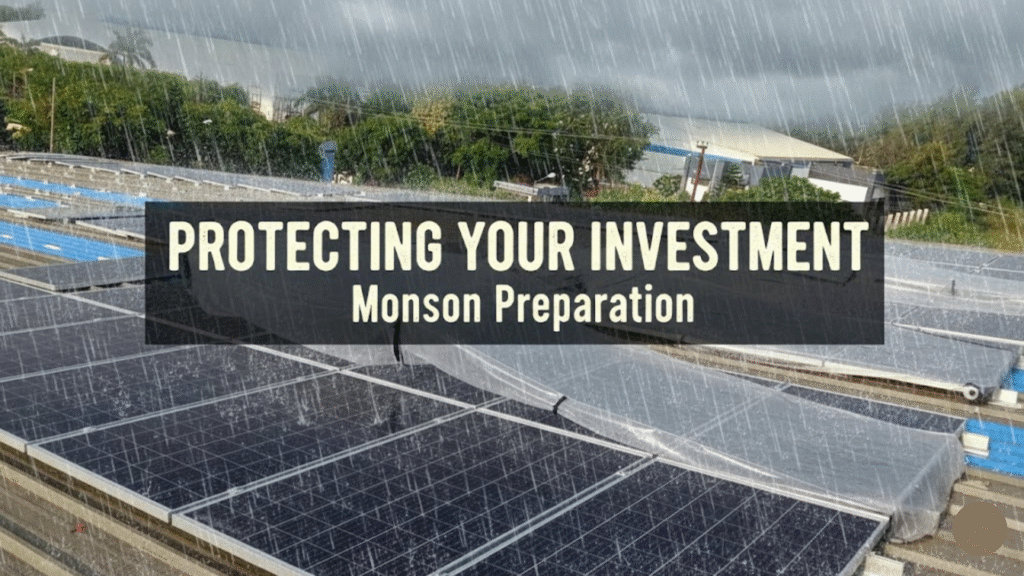
While solar panels are built to be robust, taking simple, proactive steps ensures their safety and maximizes their long-term reliability.
Pre-Monsoon Inspection Checklist
We strongly recommend an inspection before the monsoon season begins. Focus on the following key areas:
| Component | Inspection Focus | Preventive Action |
| Mounting Structure | Rust, loose fasteners, structural integrity. | Ensure all bolts, clamps, and supports are secured to withstand high winds and weight. |
| Wiring and Connectors | Exposed wires, cracked conduit, sealed points. | Verify all electrical junction boxes and cable entries are properly sealed against moisture ingress. |
| Roof and Drainage | Clogged gutters, standing water potential. | Clear all gutters and confirm the water runoff path away from the panels is unobstructed. |
| Inverter & Battery | Housing, ventilation, dry environment. | Ensure the inverter is in a dry, raised location and that battery terminals are clean and corrosion-free. |
| Lightning Protection | Grounding points, surge protection integrity. | Confirm the grounding (earthing) system is secure and operational to protect against surges. |
Frequently Asked Questions (FAQ)
Q1. Does rain damage the solar panels?
A. No, absolutely not. Solar panels are built for extreme outdoor exposure. They use highly impact-resistant tempered glass that is designed to withstand heavy rain, corrosion, and hailstones (up to a certified limit). The aluminum frames and backing materials are engineered to be 100% waterproof and corrosion-resistant.
Q2. How significant is the power reduction during prolonged cloudy periods?
A. During continuous, thick cloud cover, production typically falls to the 20%−40% range of peak capacity. If you have Net Metering, the power deficit is covered by the credits you banked earlier in the year. If you have a battery, the deficit is covered by the stored energy.
Q3. Do solar panels still work at night?
A. No. Solar panels require light (photons) to initiate the photovoltaic effect. At night, they do not produce power. That is when you rely on power from your solar battery storage (if installed) or automatically draw from the utility grid.
Q4. What is the biggest threat to solar panels during the monsoon?
A. The biggest risk is not the rain itself, but physical damage from wind-borne debris (e.g., loose antennas, branches) or issues arising from poor installation. Loose or unsealed wiring can suffer water damage, which is why choosing a highly certified installer is crucial.
Final Verdict: Solar is a Reliable Investment, Rain or Shine
The question, “Do solar panels work in rain?” is answered with an emphatic Yes. While output is temporarily reduced, the system remains operational, and the overall financial design is built to generate your required energy on a consistent annual basis.
Solar energy is an investment in a resilient, long-term power source. By choosing high-quality technology and partnering with a professional installer who understands your specific climate challenges, you can be completely confident in your system’s performance—even when the skies open up.
Ready to secure a monsoon-proof system that guarantees energy security and savings year-round? Contact us today for a free, no-obligation site assessment.
